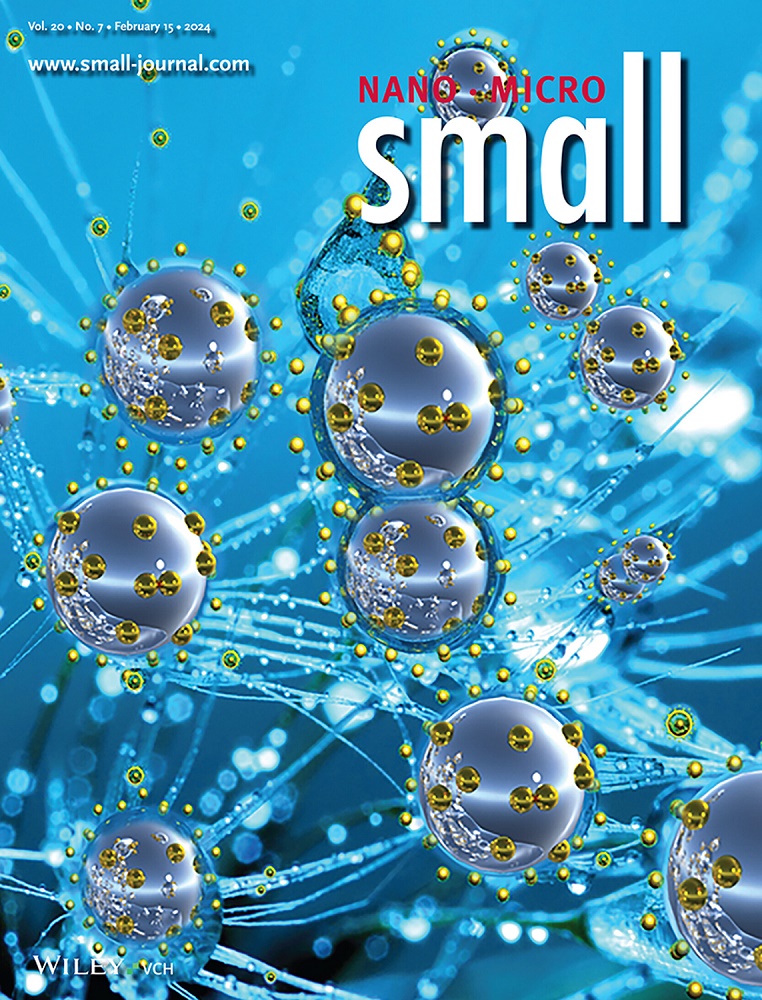Recyclable Solid‐solid Phase Change Polymer‐based Composites With High Latent Heat and Ultrahigh Thermal Conductivity via Dynamic Internal‐catalyzed Esterification and Vertically Oriented Conductive Pathway
IF 13
2区 材料科学
Q1 CHEMISTRY, MULTIDISCIPLINARY
引用次数: 0
Abstract
At present, the internal design of electronic devices tends to be integrated and miniaturized, and there is an urgent demand for composites with both high latent heat and high thermal conductivity (TC) to realize rapid heat dissipation. Herein, a simple and efficient strategy is proposed to fabricate solid‐solid phase change materials (SSPCMs) based on thermally conductive composites with high latent heat, ultrahigh TC, and reprocessability. The SSPCMs (MP) are synthesized by internal‐catalyzed esterification between styrene‐maleic anhydride copolymer (SMA) and polyethylene glycol (PEG), and then the composites (MP‐OCF) are obtained by filling the reaction in vertically oriented carbon fiber arrays (OCF). The resulting MP attains a phase transition enthalpy of 151.1 J g通过动态内催化酯化和垂直定向传导途径,具有高潜热和超高导热的可回收固固相变聚合物基复合材料
当前,电子器件内部设计趋向于集成化和小型化,迫切需要兼具高潜热和高导热系数(TC)的复合材料来实现快速散热。本文提出了一种基于高潜热、超高温度和可再加工性的导热复合材料制备固固相变材料(SSPCMs)的简单高效策略。以苯乙烯-马来酸酐共聚物(SMA)和聚乙二醇(PEG)为原料,通过内催化酯化反应合成了SSPCMs (MP),然后在垂直定向碳纤维阵列(OCF)中填充该反应得到了复合材料(MP - OCF)。所得MP的相变焓为151.1 J g−1,在120°C时发生内部酯交换,具有可再加工性。复合材料MP1‐2‐OCF在28.62 vol% CFs范围内具有128.12 W m−1 K−1的超高TC和116.3 J g−1的高相变焓,可在120℃下再处理并恢复其原始状态和性能。此外,复合材料MP - OCF在散热和太阳能储能方面具有良好的应用前景。本工作为制备导热复合材料提供了一种简便的方法,可广泛应用于热管理。
本文章由计算机程序翻译,如有差异,请以英文原文为准。
求助全文
约1分钟内获得全文
求助全文
来源期刊

Small
工程技术-材料科学:综合
CiteScore
17.70
自引率
3.80%
发文量
1830
审稿时长
2.1 months
期刊介绍:
Small serves as an exceptional platform for both experimental and theoretical studies in fundamental and applied interdisciplinary research at the nano- and microscale. The journal offers a compelling mix of peer-reviewed Research Articles, Reviews, Perspectives, and Comments.
With a remarkable 2022 Journal Impact Factor of 13.3 (Journal Citation Reports from Clarivate Analytics, 2023), Small remains among the top multidisciplinary journals, covering a wide range of topics at the interface of materials science, chemistry, physics, engineering, medicine, and biology.
Small's readership includes biochemists, biologists, biomedical scientists, chemists, engineers, information technologists, materials scientists, physicists, and theoreticians alike.
 求助内容:
求助内容: 应助结果提醒方式:
应助结果提醒方式:


